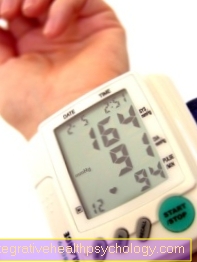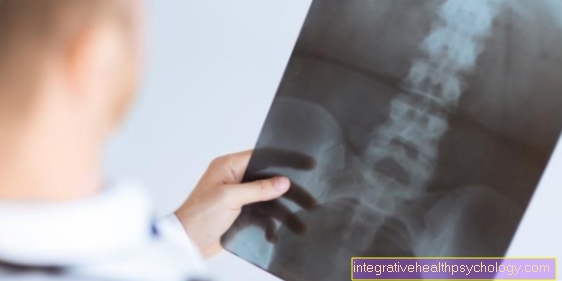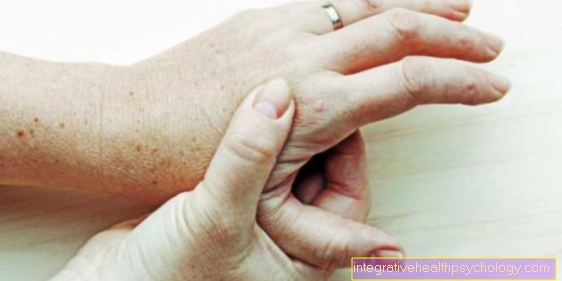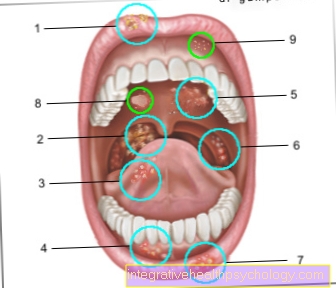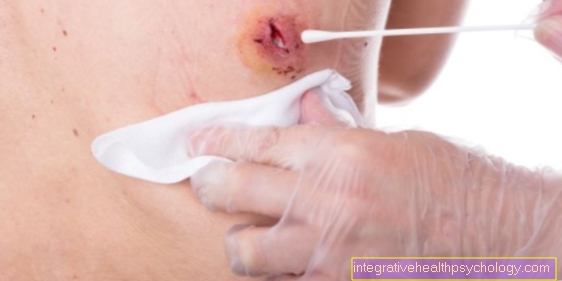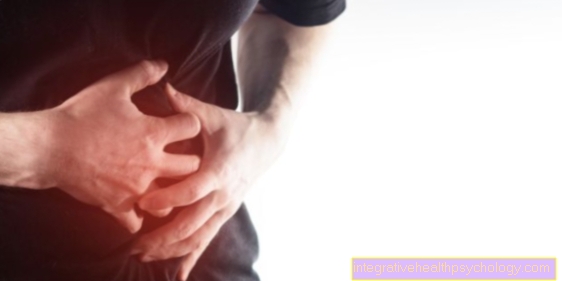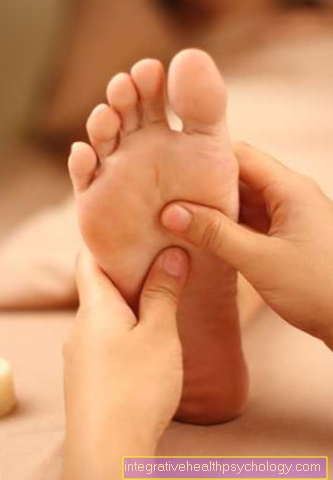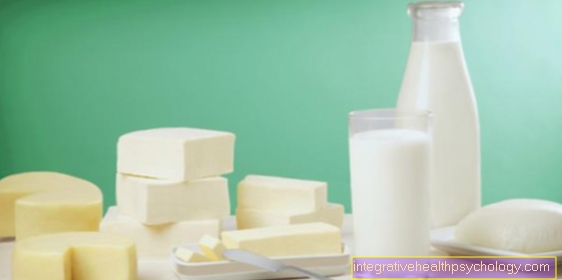occlusion
Synonyms
Shot bite, bite closure
English: occlusion
definition
Occlusion is the position of the lower row of teeth in relation to the upper row in the final bite, or, to put it more simply, the clenching of the upper and lower jaw. In the final bite, the rows of teeth meet in the occlusal position and form the occlusal plane. In the rest position, however, the teeth do not touch, but gape 1–2 mm apart (static occlusion).

Each tooth does not directly meet the tooth opposite it, but each tooth has contact with 2 teeth during occlusion (Antagonists) of the opposite jaw, on which the pressure is distributed (dynamic occlusion). The bumps and dimples (Fissures) on the surface of the teeth ensure that the teeth find their optimal position. Because the upper incisors are wider than the lower, the upper row of teeth is offset back by half a tooth width.
When chewing, the rows of teeth slide on each other. This movement is called articulation, with the canine taking the lead (canine guidance). With normal occlusion, the lip closure line forms a straight line with the occlusal plane. The dental technician must take this into account as a guide when performing a full denture.
Occlusion disorders
An occlusion disorder is an incorrect position of the jaws in relation to one another.
There are various reasons for which normal tooth row closure is no longer guaranteed. This can extend to individual teeth or to the entire set of teeth. Too high a tooth filling, crown, bridge or even unreplaced extracted teeth can lead to occlusal disorders. Any positional anomalies such as cross bite, open bite or forced bite also prevent normal occlusion.
In the standard set of teeth, all of the posterior teeth are evenly in contact with one another, while the temporomandibular joint assumes a central, balanced position. However, if the tooth position deviates from the norm - for example due to the introduction of a crown / bridge or a tooth change - this leads to incorrect loading of the system.
Individual teeth are then excessively stressed, while others are not at all. This one-sided stress leads to a misalignment in the joint, which is noticeable in some people through severe pain. This pain affects not only the joint itself, but the entire chewing system. Since the masticatory muscles are also improperly stressed, tension and pain may extend into the back muscles.
The chewing organ is a very complex system, which is why problems here should be taken seriously in order to prevent permanent damage.
Read more about this at: Temporomandibular joint pain
Consequences of occlusal disorders
The effects of a disturbance in physiological occlusion can lead to quite uncomfortable complaints. Above all, the unbalanced load on individual teeth damages the teeth holding apparatus. But the jaw joint and the masticatory muscles are also affected by the unbalanced load. The consequences are pain in the tooth, in the temporomandibular joint and tension in the masticatory muscles. The chewing function can also be impaired as normal articulation is no longer possible.
What is occlusion therapy?
Occlusion therapy is the treatment of an occlusion disorder. It is usually carried out when the patient complains of pain or problems in the temporomandibular joint or the masticatory muscles.
If the reason for a disturbed occlusion is a tooth filling that is too high, the raised areas can be identified using blue paper, and the dentist will remove this error by grinding in and thereby restore normal conditions. In the case of bite abnormalities, orthodontic measures can restore proper occlusion.
An attempt is made to find a central joint position that is comfortable for the patient and that no longer causes pain. Then this is secured over the bite. The aim should be that the patient finds his way back into the "perfect" position every time he bites together in order to relieve and protect the joint. If one side of the joint is stressed more than the other, unphysiological conditions can quickly reappear.
This "bite protection" can take place at the beginning using an occlusion splint.
The dentist makes models of the teeth for this and transfers the correct bite position to the articulator, a device to artificially represent the movement of the temporomandibular joint. Then the dental technician can make an occlusion splint. If this is worn regularly, the doctor has to grind in further in order to adjust the bite to one hundredth. Once the correct bite position has been found and the patient has no further complaints for a period of about half a year, the aim is to achieve definitive bite protection.
Depending on the tooth status, this can be done by crowning the teeth or by orthodontic tooth repositioning. Here, each patient has to decide for himself whether he would prefer to wear a splint at night or whether he wants a definitive solution.
Occlusion splint
The occlusion splint is a horseshoe-shaped splint made of plastic that covers either the upper or lower row of teeth.
The aim is to create balanced tooth contacts, i.e. a situation in which each tooth is in contact with its opponent or, as here, with the splint at the same time. On the one hand, this harmonious position has the positive effect that the joint is stressed in a neutral position, on the other hand it protects the teeth and slowly gets the chewing system used to the neutral bite position.
You might also be interested in: Grinding splint
Protection is particularly necessary if you clench or grind your teeth at night. Then the teeth rub against each other and pain occurs. They are caused by a lack of hard tooth substance, increased stress on individual teeth or in the temporomandibular joint due to incorrect loading due to the wrong bite.
However, if the splint is worn at night, these symptoms often go away on their own.
See also under: Grinding teeth in sleep
What is occlusion training?
Occlusion training is not a term from dentistry, rather it describes an exercise from training science. It is a new type of strength and endurance training and is aimed at muscle growth and increased endurance.
Occlusion here means: the closure of a vessel or a passage in the body, which leads to its ligation. The binding triggers an increase in metabolic products and an accumulation of growth hormones at this point due to the congestion of blood. This allows the muscles to be built up there faster. Furthermore, the muscle-degrading protein myostatin was shown to be reduced when occlusion training was used.
It is extremely positive that this type of training can be carried out with very low loads and can therefore be carried out wonderfully in the rehabilitation phase after operations. Exclusion criteria for use are high blood pressure, pregnancy, heart defects and an increased risk of thrombosis, as this can exacerbate the disease.
If you are interested in building muscle, read on under: Strength training
Summary
Under the occlusion one understands the location of the teeth of the upper jaw to the teeth of the lower jaw. Deviations from the physiological occlusion can lead to considerable discomfort of the teeth, the temporomandibular joint and the masticatory muscles. Normal conditions can be restored through dental and orthodontic measures.



